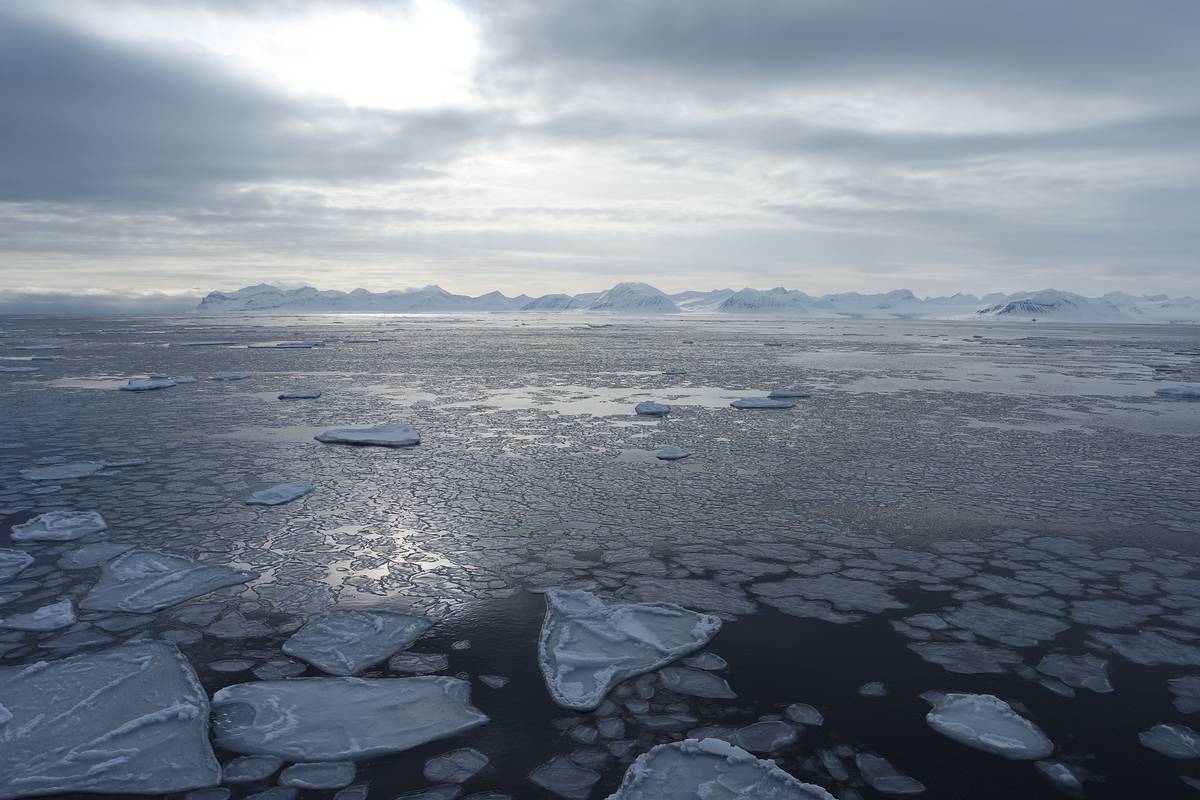German scientists deliver a new study shedding light on Arctic sea ice fate

The Azores High and Icelandic Low have a significant impact on the amount of warm water transported to the Arctic along the Norwegian coast. This interplay can be disrupted for extended periods due to unusual atmospheric pressure conditions over the North Atlantic. The experts from the Alfred Wegener Institute, Helmholtz Centre for Polar and Marine Research have finally explained why low-pressure areas are diverted from their usual path, disrupting the coupling between the Azores High, the Icelandic Low, and the winds off the Norwegian coast. This finding is a crucial step towards refining climate models and more accurately predicting the fate of Arctic sea ice in the face of advancing climate change.
The Alfred Wegener Institute, Helmholtz Centre for Polar and Marine Research, a member of the Helmholtz Association of German Research Centres, conducts research in the high and mid-latitude oceans, the Arctic, and the Antarctic. The institute was founded in 1980 and named after meteorologist, climatologist, and geologist Alfred Wegener. Its research topics include North Sea research, marine biological monitoring, and technical marine developments.
During winter, the Norwegian coast experiences harsh weather conditions, characterized by the wind blowing out of the southwest for days or even weeks. Low-pressure areas move along the coast, bringing rain and snow and determining the amount of warm water the Atlantic carries from southerly latitudes to the Barents Sea and the Arctic. However, the flow of warm water may vary, and it is essential to understand the cause of these fluctuations in the complex air and ocean currents off the coast of Norway and in the Barents Sea to improve climate models.
Temporary decoupling
A recent study conducted by oceanographer Finn Heukamp and his team at the Alfred Wegener Institute, Helmholtz Centre for Polar and Marine Research (AWI) focused on analyzing ocean currents along the Norwegian coast and into the Barents Sea. The study examined the North Atlantic Oscillation (NAO), which is the atmospheric pressure difference between the Azores High and the Icelandic Low, and how it affects the currents off the coast of Norway. The team aimed to understand why there were significant deviations from the typical interplay between the NAO and weather conditions, which caused extreme ocean currents in some cases.
The intensity of winds and ocean currents is mainly influenced by the atmospheric pressure difference in the NAO. When the NAO is more pronounced, it creates powerful air currents that drive low-pressure areas across the North Atlantic and past Norway on their way north. When the atmospheric pressure difference lessens, both the winds and the low-pressure areas lose momentum. The NAO, the low-pressure areas' track, and the ocean current intensity off the coast of Norway are closely interconnected under normal circumstances. However, the study observed a decoupling of the NAO and ocean currents in the Barents Sea from the late 1990s.
The unusual decoupling phenomenon frequently occurred in winter between 1995 and 2005, but the reason behind it was unclear. The experts have now found the answer thanks to a mathematical ocean model that simulates the Arctic Ocean at high resolution. The decoupling is attributed to an unusual change in the low-pressure areas' track. Finn Heukamp discovered that the stream of low-pressure areas that move from the southwest to the north and pass by Norway is sometimes disrupted by powerful, nearly stationary high-pressure areas, known as blocking highs. These areas push the fast-moving low-pressure areas out of their normal track, temporarily decoupling the NAO and the northward flow of warm water.
Improving Climate Models
“At the moment, we still can’t say how often this type of situation arises – for instance, if it repeats every few decades – because the observational data we use to compare with our ocean model only goes back roughly 40 years,” says Heukamp. Nevertheless, the findings are very important for climate modeling. “Global climate models simulate on a comparatively broad scale,” the researcher explains. “With the latest results from our high-resolution analysis for the North Atlantic and the Arctic, we’ve now added an important detail for making climate modeling for the Arctic even more accurate.”
The research conducted by German researchers highlights the need to consider the NAO, low-pressure areas over the Atlantic, and ocean currents together in the future. Since both the transport of warm water and the path of lows over the Atlantic impact weather in the middle latitudes, the findings are useful for predicting the future climate and weather in Central Europe with greater accuracy.
The study has provided valuable insight into the future of Arctic sea ice. The findings of the study suggest that the Arctic sea ice is likely to decrease in the coming years due to the effects of climate change. This is an alarming trend that needs to be addressed urgently. However, the study also provides hope that the effects of climate change can be mitigated through the implementation of effective policies and strategies. It is now up to us to take the necessary steps to ensure that the Arctic sea ice is preserved for future generations.

 How to resolve AdBlock issue?
How to resolve AdBlock issue?